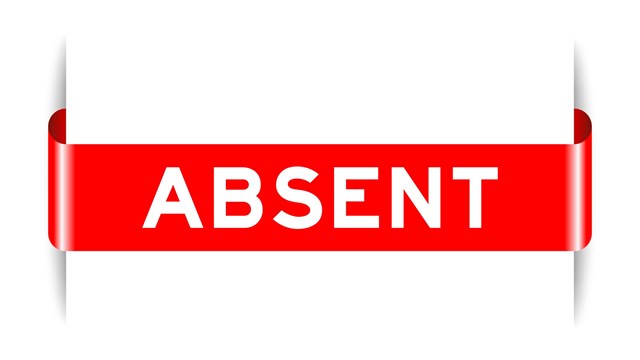Disorganized and poorly-run board meetings are time-wasters that can make even the most ardent board member cringe at the thought of an upcoming session. On the flip side, a well-run board meeting can be a productive hour or two or three that benefits the entire building. Here are a few tips from the professionals for getting the most out of your meetings.
Preparing for the Meeting
No one should be heading into a monthly board meeting unprepared and uninformed. The days when the board meeting served as the primary method of disseminating information are long gone; today rapid communication like email, smart phones and BlackBerry devices can keep board members, residents and managers up-to-date monthly, weekly, daily or even by the hour. So preparation for the next meeting can begin almost as soon as the first one ends.
“Preparation, I believe, is paramount to the success of any board meeting both from the managers’ perspective and from the board members perspective,” says Nancy Hastings, CEO of MAMCO Property Management in Mount Laurel, New Jersey. “The meeting materials should be provided to the board a week in advance and it should be in a package that’s concise and easy for them to digest. It should also be put in the order that it will be discussed at the meeting.”
Denise Lindsey, vice president of business development for Signature Property Group in North Brunswick, New Jersey, wholeheartedly agrees. “Preparation is paramount to a successful board meeting,” she says. “A board meeting is a working session where the board members must rely on timely and complete information to make important decisions on behalf of the association.”
“Board meeting preparation is essential to ensuring a smooth and productive meeting,” adds Tejas Kadia, CMCA, AMS, and founder of Reliance Property Management Group in Jersey City, New Jersey. “Board members and the association’s manager should review all of the agenda items and supporting documentation prior to the meeting to ensure the best use of everyone’s time.”
Stay on Point
It can be difficult keeping to the task at hand during the course of a board meeting where high passion and lively discussion often take center stage. But there are ways to keep meetings from dragging on interminably.
Experts believe it’s important to start the meeting on time and stick to the agenda. “Meeting agendas should be as specific as possible while ensuring that confidential matters remain confidential,” says Kadia. “At a minimum, the agenda should explain the topics to be discussed, what decisions need to be made, and the amount of time allotted for the item.”
“Timed agendas are very helpful if you have a board meeting where you have to cover multiple topics that you know could possibly linger or if you have board members and homeowners that tend to make meetings go long,” says Hastings. “The timed agenda could be distributed to the board members before the meeting. For example, you can say 'At 7 p.m. we are reviewing minutes—and by 7:30 p.m. we will move on to old business. By 8 p.m. we’ll be on to new business.' So this way you are progressing through the meeting and you can look and see where you are in time. It will help complete things in a timely fashion.”
Board meeting time-wasters can vary from participants being unaware of the agenda to tardiness to long windedness.
“The best way to avoid board meetings from dragging on is to make sure that board members review board room materials in advance,” says Hastings. “We don’t want everybody showing up at the last minute and taking protracted periods of time to review information. Board members should take advantage of getting material in advance and making sure they are reviewing them. It’s also a good idea to make sure homeowners and members who are in attendance at the meeting limit their comments and only be allowed to speak during a certain time. If the president sets the example of letting people interject at all periods of time throughout the meeting, it’ll be very tough to stick to the agenda and stay on topic and get through the business portion of the meeting.”
“It’s important to stay on point during a board meeting,” says Kadia. “Board members and association managers would ensure that a clearly defined agenda is prepared and distributed well in advance of the meeting, including specific time allowances for each agenda item. If things start dragging on, the property manager can move the meeting forward by politely reminding the board when it is time to move on to the next topic of discussion.”
Robert’s Rules
There is no requirement that Robert’s Rules of Order, the prescribed guide for parliamentary procedure used by most government and corporate entities, are followed at a board meeting unless it’s specified in the community association documents, but most community association documents leave the rules of order to the board president.
“Every board is different and should rely on their documents if it specifies using Robert’s Rules of Order,” says Lindsey. “Most HOA boards use a modified version of Robert’s Rules to maintain order and proper voting procedures are followed.”
While some association management experts believe that Robert’s Rules of Order is too formal for board meetings others believe it’s a good idea.
“I think every board should use Robert’s Rules of Order,” says Hastings. “It gives meetings more structure and structure at a meeting is a requirement for associations to be able to conduct fair and productive meetings.”
Who’s in Charge?
Meetings are the place when board members and unit owners expect to share their views or bring up matters relevant to the building community. This can be a problem when everyone has something to say and an inexperienced facilitator, who is unacquainted with keeping order, is chairing the meeting.
“Effective board presidents chair their board meetings to ensure that the conversation stays on topic, that all board member opinions are heard and debated and that the board comes to a majority on making decisions,” says Kadia. “They also do a terrific job of inviting homeowner input when appropriate. Effective association managers complement the board president by taking the lead on agenda items which he or she is most involved in, and providing valuable input throughout the various discussions based on professional knowledge and experience.”
“The manager is at a board meeting to provide any background information on agenda items and to welcome the homeowners to the meeting,” adds Lindsey. “The president’s role is to adhere to the agenda and follow proper meeting procedures.”
Confusion can arise over what role the association manager plays at a board meeting. So it’s best everyone knows what’s expected of them.
Staff Writer Christy Smith-Sloman contributed to this article.







Leave a Comment